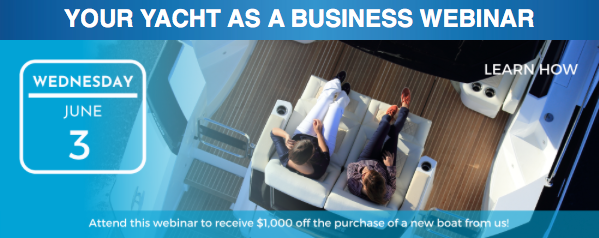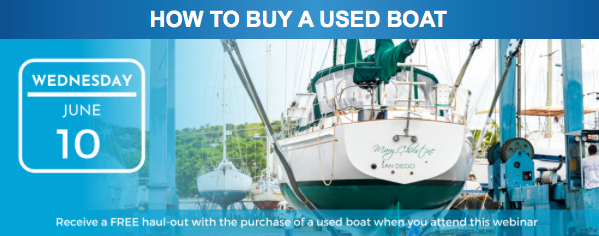
Vessels Caught in ‘Circle Spoofing’ Off West Coast
One of the great technological advancements of modern-day sailing is the ability to watch a vessel’s track as it makes its way around the world. AIS (Automatic Identification System) is a tracking system used by thousands of private and commercial vessels that not only keeps family and friends abreast of your travels, but also provides an additional layer of safety by enabling other vessels to see you, long before you can see each other physically. And for those of us who have spent any time at sea, it can be a great comfort to know that someone is watching. But what happens when the AIS is wrong?
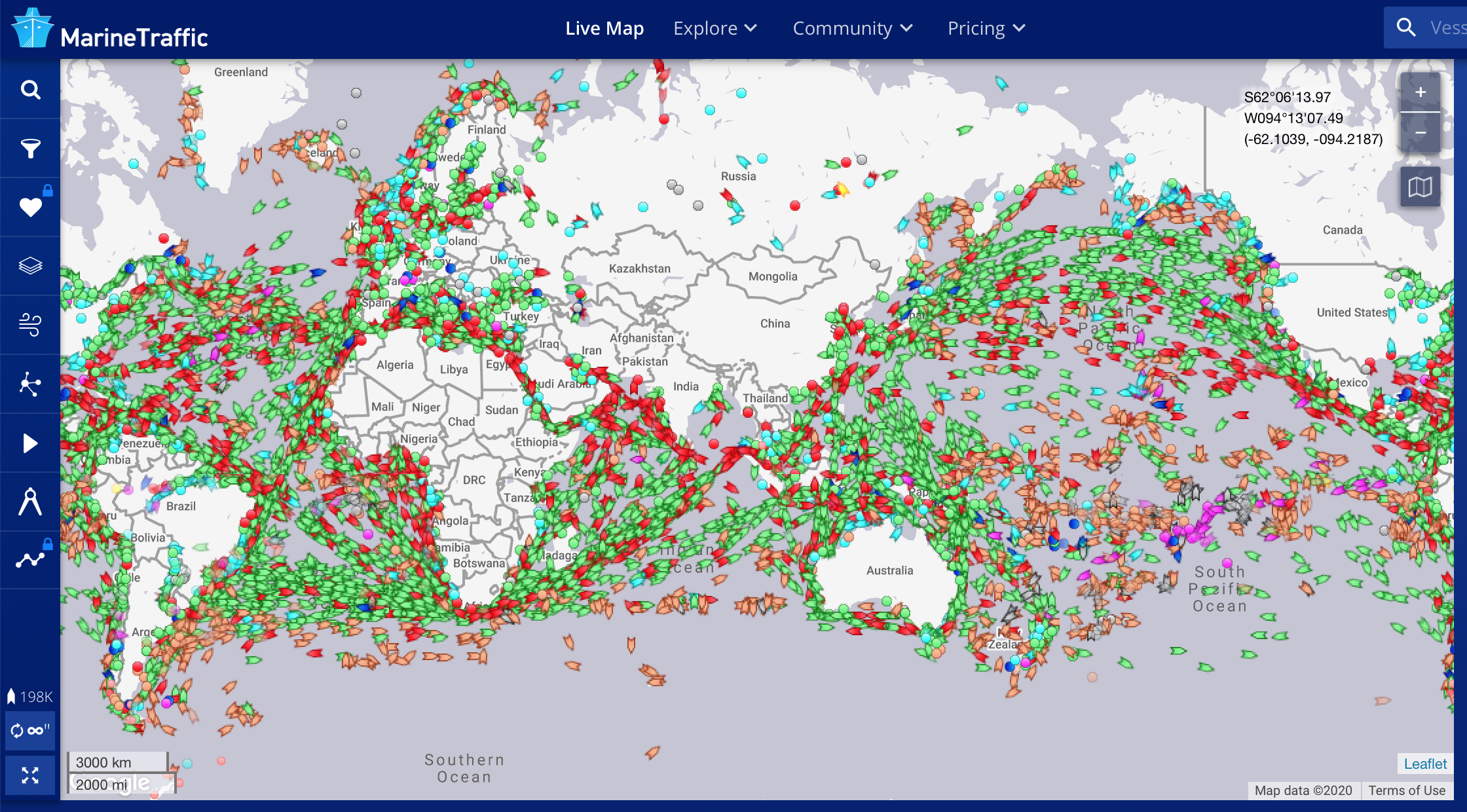
In a recent observation, a number of vessels have been reported to be circling northwest of San Francisco, and off Madrid, Hong Kong and China, while their physical locations are thousands of miles away in other parts of the globe. The discovery, loosely coined ‘circle spoofing’, appears to be related to similar incidents previously observed in China and Iran. But researcher Bjorn Bergman of SkyTruth, a nonprofit organization based in West Virginia, says his search for an explanation is hampered by the lack of “commonality between the vessels and incidents.”
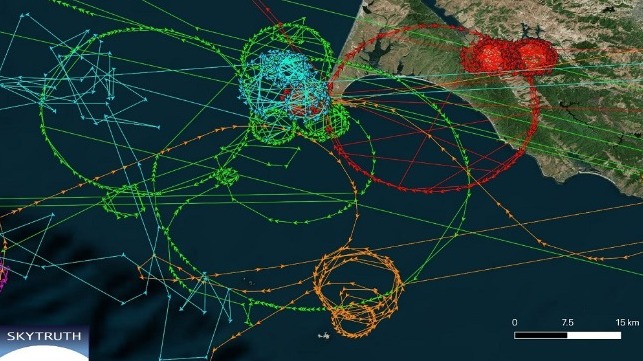
While the phenomenon remains a mystery, the Resilient Navigation and Timing Foundation (RNT) is hoping to hear from people who have ideas or insights that could help solve the mystery. Follow the link to read more: www.maritime-executive.com/editorials/mystery-12-ships-ais-positions-thousands-of-miles-off-and-circling.
Update from the Richmond Riviera
Model Boat Racing in Richmond
We love it when our friends send us great stories, photos and videos. This one is brought to Latitude Nation courtesy of the East Bay’s Chris Sullivan. Chris is an avid RC sailboat racer, especially in the One Metre Class. Last week, Chris organized a bit of informal COVID-19 RC sailboat scrimmaging at the Richmond Yacht Club.
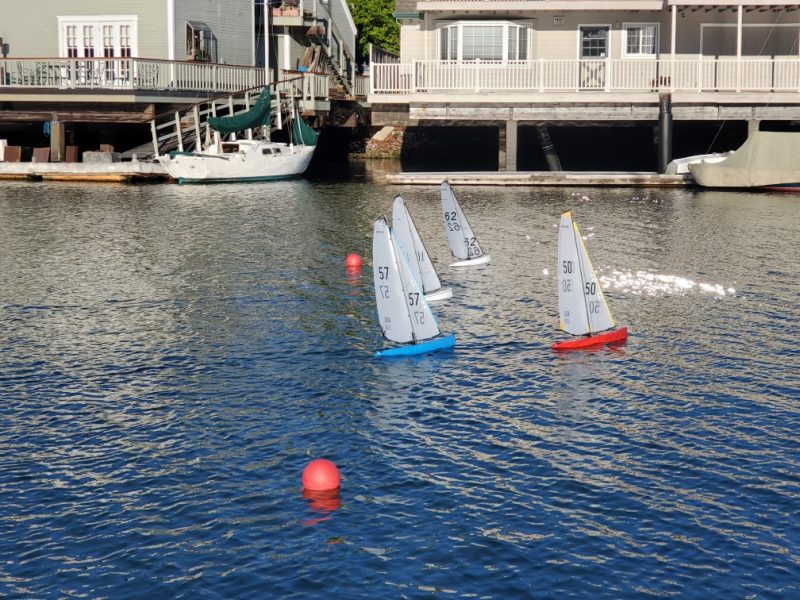
Chris races model boats that are as large as a Wheeler, which Chris and his son Evan were recently repairing in their garage. Wheelers are, according to the American Model Yacht Association specs: 79 inches in overall length, 63 inches at the waterline, with a 15-inch beam and carrying 2,000 square inches of sail on a fractional rig. The minimum weight of the boat is 30 lbs. The keel bulb weighs in at 19 lbs.
The informal racing on May 25 took place using boats of the much more compact DragonFlite 95 class, which are about 38 inches long. The boats cost less than the price of a new El Toro sail, which reminds us that Chris and Evan Sullivan also appear in this month’s Racing Sheet. They were part of an extremely anarchic bit of UnRegatta fun that happened May 9 in El Toros.
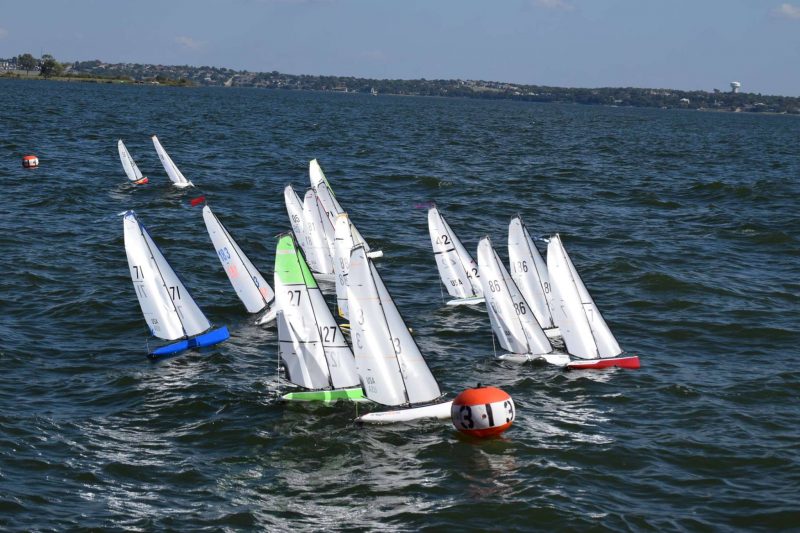
Evan Sullivan and his dad are both participants in RYC’s venerable Junior Sailing Program. This parent/volunteer-run program takes place between October and April. Evan is a top competitor in the Advanced El Toro fleet. Chris helps out as a mark-boat volunteer in one of the Boston Whalers. Both father and son traveled to Kaneohe Bay last August, where they raced in the El Toro North American Championships.
The Economics of Big-Boat Navigation
Chris also strongly recommended that we watch the fantastic interview below with Stan Honey and Sally Lindsay Honey. We love listening to and learning from both Sally, currently chairperson of US Sailing’s Safety at Sea Committee, and Stan, who requires no introduction.
In this interview, Stan describes his approach to big-boat navigation in a refreshing new way. He also covers lots of other fascinating topics ranging from why he loves Cal 40s to the National Football League’s electronic first-down line — which Stan helped invent. Sally discusses 5O5 racing, where she was one of the first female champions. Host Gary Jobson even pokes fun at the fact that Sally has two Rolex awards to her husband’s single Yachtsman of the Year watch.
It’s an entertaining video if you’re looking to fill some time on a Friday.
Real Beer Can Racing Is Back
Yay! Richmond Yacht Club has brought back Wednesday night beer can racing. There has been a ton of behind-the-scenes work performed by tireless folks including Standing Race Committee chair Fred Paxton, Laura Muñoz from the YRA and others. They have written a Notice of Race covering this series, which is currently for RYC club members only. We look forward to competing in the non-spinnaker division on June 10.
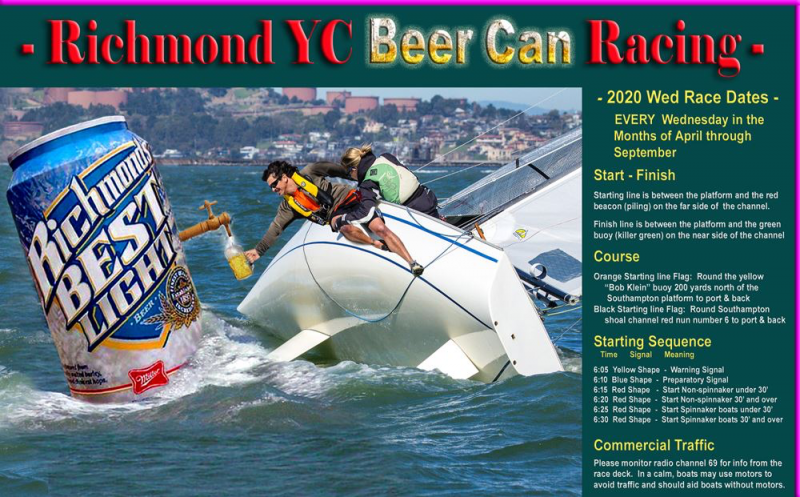
Passage Nautical June Webinar Series
If you’re considering the purchase of a boat, it’s important to be as informed about the process as possible. Passage Nautical is committed to informing, by creating a series of live webinars that give you the insights and knowledge to make the right choices, and maximize the value of your buying experience. Each webinar is focused on a different aspect of the boat-buying process. With more than 35 years of industry experience and thousands of boat sales, Passage Nautical is in a unique position to share honest and learned advice. The webinar schedule for June is:
June 3: Your Yacht as a Business Webinar
- Learn the tax and ownership advantages of placing your boat in a charter program.
- Learn how to track and structure expenses to maximize tax benefits.
- Get a clear picture of the process and how it will fit with your boating dreams and lifestyle.
June 10: How to Buy a Used Boat Webinar
- Learn the importance of comparing boats locally vs regionally.
- Learn the benefits and possible risks when buying used, and the financial details.
- Understand the overall process and the pitfalls, and how to navigate these.
- This webinar is also a great refresher if it’s been a while since your last boat purchase.
June 16: Anatomy of a Survey Webinar
- Learn valuable information on all the types of surveys to do at the time of purchase.
- Learn how to choose a surveyor and the qualifications for professional Marine Surveyors.
- Learn how to get the most out of your survey.
South Beach Boat Stolen and Recovered — Again!
When we left off the story of South Beach Yacht Club’s stolen RIB, Mackin, on Wednesday, club members had recovered the boat in Gashouse Cove and the suspect was still at large. But that all changed. What follows is excerpted from rear commodore Wendy Hanrahan’s report to the members.
She received a call from Chris Naughton of a fellow South Beach Harbor tenant, the Bay Area Association of Disabled Sailors, at 7:44 p.m. on Thursday, May 28. “He told me that Drew Harper said that the Mackin is at Anchorage #9. I’m like, ‘No way! I just retrieved the bloody boat yesterday! This has to be a mistake.’ He said to call Wade from TowBoatUS. So I did. I asked, ‘Do you have the Mackin?’ He said yes, he has it and he’s towing it to Pier 40.”
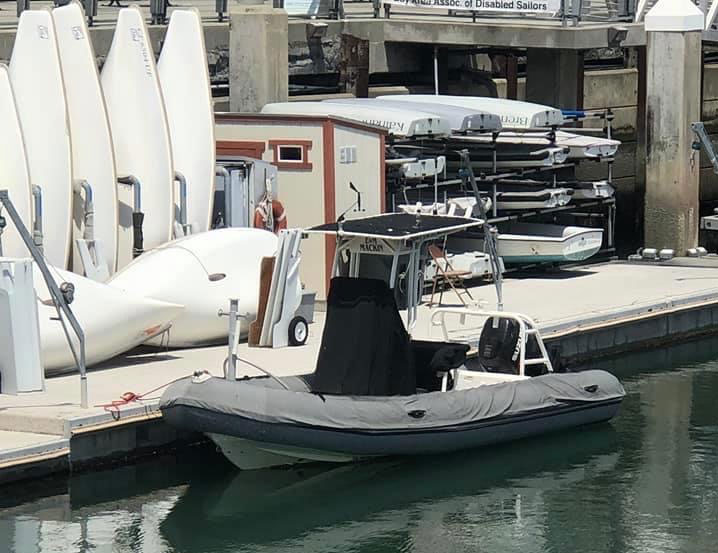
“Terry said let’s just go down to the boat and check everything out. I called the police as we headed toward Pier 40. The person who answered said that the police were already down at the dinghy dock. When we arrived at the dinghy dock TowBoatUS was there with the Mackin side-tied to their boat with two officers there.” The TowBoatUS guys told Hanrahan that they’d had a call from the USCG to help a disabled boat around Anchorage #9. “They found a guy who looked skitterish on the Mackin. Looking at the man, they didn’t think he was capable of paying the tow fee. They thought the Mackin belonged to Drew Harper, so they called him. The TowBoatUS guys also called the police to meet them at Pier 40. The men tried talking to the guy to keep him there until the police arrived. The police had a very difficult time finding the dinghy dock when they were up on the Pier 40 blacktop parking lot.
“The thief heard one of the fellows trying to tell the police how to find them, and he ran away. The police then started questioning me about the Mackin. I told them that it was stolen Sunday and I retrieved it Tuesday. They asked if I had a police report. I said I was in the middle of the online police report when I paused because I didn’t have the boat model, engine information, CF number and vessel ID number. I was booted off the police report for being dormant for more than five minutes. So no, I did not fill out a police report. I told the police that I had a photo of the thief from Sunday.”
SBYC’s commodore, Cat Reining, arrived, and the police left. “I went up to Pier 40 storage to retrieve the spare battery so we could jumpstart the boat. It’s dark in the shed, and I don’t see well in the dark. I was trying to open the lock when Terry called me from the entrance of the Pier. I told him where I was and he started walking toward me as I fiddled with the lock.
“In front of the BAADS storage area, Terry finds a man hiding behind a pillar. He looks at the guy and shouts, ‘Wendy, it’s the thief!’ He starts fighting with the man, and I’m running very poorly in my flip-flops toward them. Terry tackles the guy and puts him face down on the ground and sits on him.
“I’m yelling for Cat out on the dock to come help, and I’m calling 911 to tell the police to hurry back. As I’m on the phone I can hear Terry tell Cat to tie the thief’s legs together with the jumper cables he was carrying. I’m running (very poorly still) out of the pier shed to wave the police to come inside to the Pier storage. I was hoping it would be the same two officers that would be coming, and luckily they were. So no lengthy explanation of the history. They came to get the thief from Terry, and Cat and asked how we got him. I’m explaining the story and answering their questions.”
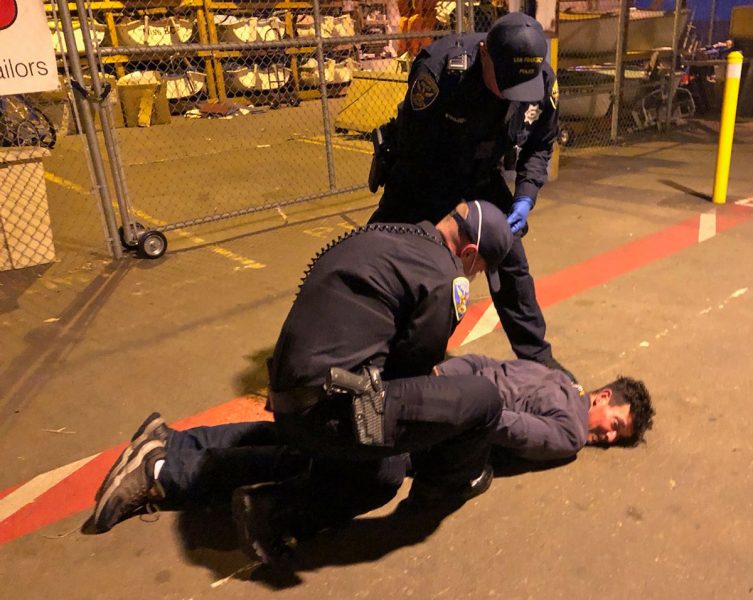
“In the meantime, Terry discovers that it wasn’t the battery that died on the boat. The thief screwed around with the ignition. Then the police officer comes back to me and says, ‘We need the photos from the boat now. We need proof that he is the one that took the boat today.’ The TowBoatUS fellows could not come back to ID him.”
Hanrahan called Dave Corbin to come and retrieve the photos. “As everything was wrapping up, the policeman said that the thief wasn’t right and they were taking him to the hospital. He said that after the hospital he most likely will be released. But they have his photos and the two police reports that he stole the boat. He asked if I wanted to put a stay away order on him. This means he has to stay 100 yards away from Pier 40. I immediately said yes.”
The Mackin went to H&M Services in Sausalito. Patti Mangan, SBYC’s membership officer, says that the RIB is “likely a total loss.”
Are Sailors Stranded at Sea Seeing a Light at the End of the Tunnel?
Has the COVID-19 pandemic forced some countries to breach international maritime laws and deny sailors safe harbor? Are cruisers, who are by nature transient and who cross borders regularly, caught between a particularly unique rock and a hard place, or are they just stuck in inconvenient situations like the rest of us? And, for our final question in this lead, has the pandemic made the mainstream media discover that cruising exists?
After about three months, but what feels like three years, of reporting on the pandemic’s effects, we are starting to hear the same things — or rather, the broader context is setting in.
In this month’s Latitude, editor at large Andy Turpin shares dispatches from cruisers in the South Pacific. “Following the pivotal March 11 announcement of Tahiti’s first confirmed case of COVID-19, leaders of the French Overseas Territory quickly took unprecedented steps to combat the spread of the virus. In addition to implementing ‘lockdown’ ordinances ashore, cruise ships were denied entry to ports and anchorages, inter-island boat travel was forbidden, all international and inter-island flights were canceled, and then virtually every land-based tourist was flown home via a series of ‘repatriation flights.'”
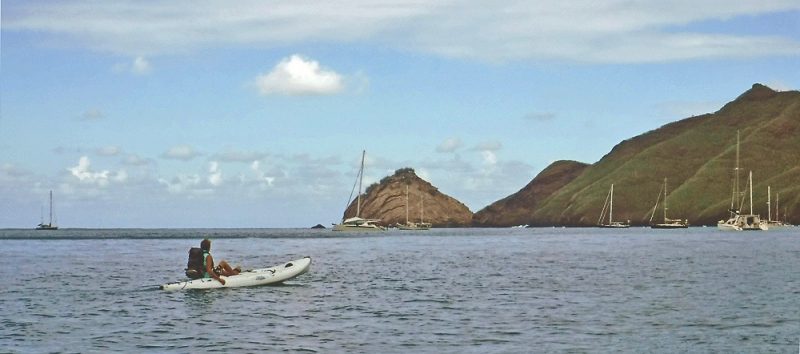
Andy said that while sailors who had not yet departed for the South Pacific were asked to cancel their passages, “policymakers in Tahiti acknowledged that vessels that had just crossed a minimum of 3,000 miles of open ocean nonstop would need to fuel up, reprovision and make repairs, even if they weren’t allowed to freely cruise the territory’s five archipelagos as in years past.”
On May 20, French Polynesia’s president and its high commissioner jointly announced an end to almost all the restrictions that had been implemented nine weeks earlier, including inter-island travel, Andy reported.
Not long after the pandemic began, The Facebook group Stranded at Sea 2020 sprang up as a forum for boats in limbo. “Since shelter in place rules began worldwide, we’ve heard countless stories of cruisers and sailors who were en route to safer harbors as Hurricane Season 2020 is around the corner, only to be denied safe harbor. Ranging from rude to downright illegal, we’ve heard of vessels being approached by police in the middle of the night and told they had to leave. Others were allowed to fuel and receive water, but then sent along. It is frankly, quite dangerous to send a tired crew back out to sea, and breaks international safe harbor laws.”
Stranded at Sea recently shared posts saying that several Caribbean countries — such as St. Lucia, Grenada, Antigua and Barbuda — are set to open soon (or already have).
“It turns out, a lot of former Bay Area residents are stranded on their boats during the pandemic,” SF Gate wrote recently, having originally reported on Audrey and Garrett Ruhland, who were stuck on the 35-ft thisldu.

Well, cruisers are on the mainstream radar, anyway.
In mid-March, CNN ran the story Trip of a Lifetime with No End in Sight — Life on Small Boats Stuck at Sea, which featured several cruisers, including the Seattle-based YouTube juggernaut SV Delos. The 53-ft Amel Super Maramu was in the Bahamas with Brian and Karin Trautman and their newborn Sierra, who were waiting for Brady Trautman and Alex Blue to return from Lake Tahoe (we think); Delos was planning on sailing to the east coast of Canada and on to the Northwest Passage to complete a circumnavigation 10-ish years in the making.
Regarding the pandemic, Brian was quoted as saying, “I feel like we’ve been preparing for this our entire sailing career. We have months of food and fuel, and can make our own water and alcohol.” Delos had been anchored at an upopulated atoll with eight other boats for more than 80 days, according to CNN.
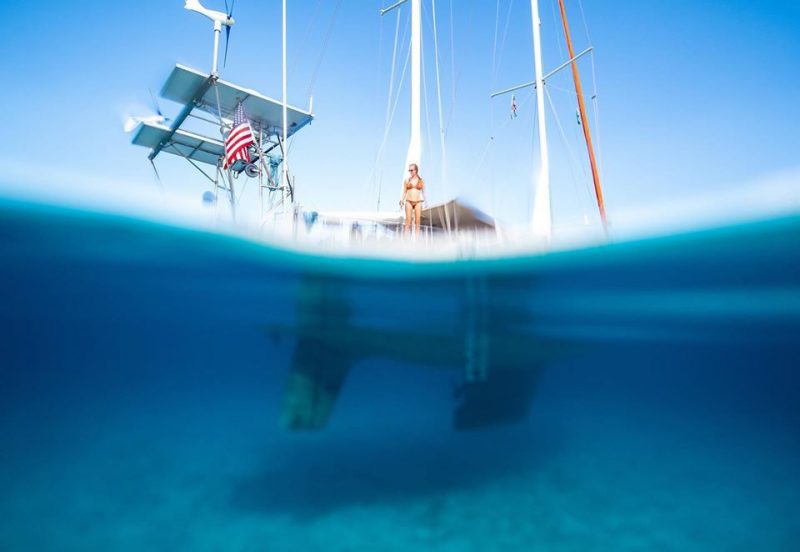
It might be easy to forget that “cruisers” encompasses a large group of people in a number of different circumstances, from the fortunate to the cursed. We mean this in terms of people’s individual logistics as to where they might have gotten stuck, as well as their respective financial situations.
Before YouTube stardom, the Delos crew scraped out the cruising life in the “traditional” way, by working odd jobs at various destinations. While we’re not making any assumptions about the living they make, Delos seems to have gained a certain level of cruising comfort. We’re not sure what the average CNN reader assumes about sailors, but it’s fair to say that many non-sailors still look at sailing as a lifestyle of the rich rather than the working class.
During our time in New Zealand — where sailing is famously egalitarian — we met lots of blue-collar people working month-to-month to pay bills and slip fees, and to work on their boats. Everyone was taking the pandemic in stride and grateful for their health and relative security (the New Zealand government is also famous for taking care of its citizens). But people also told us that they were disappointed, frustrated and bored. “It’s the loss of choice that hurts,” said one sailor.
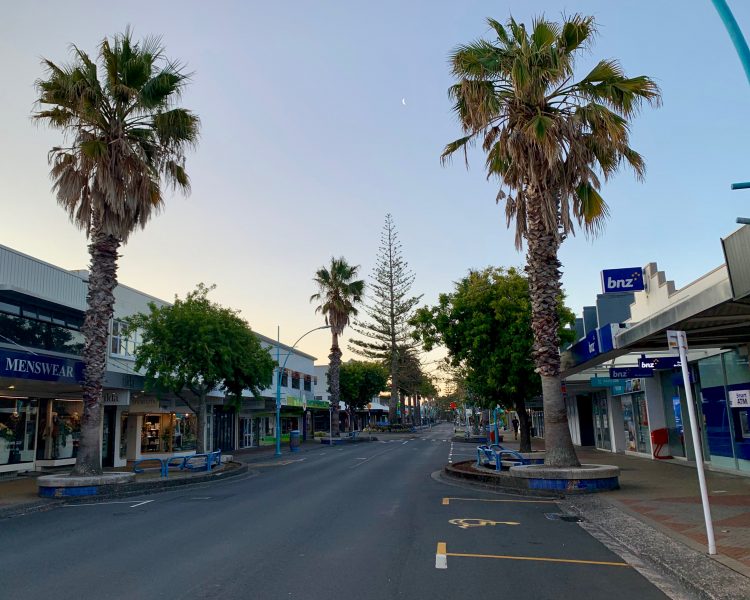
The most pressing of questions is, are countries breaking international maritime law by denying entry?
The United Nations Convention Law of the Sea, or UNCLOS, does not directly define “safe harbor.” UNCLOS says that ships of all states enjoy the right of innocent passage through all territorial seas. “Passage shall be continuous and expeditious. However, passage includes stopping and anchoring, but only in so far as the same are incidental to ordinary navigation or are rendered necessary by force majeure or distress or for the purpose of rendering assistance to persons, ships or aircraft in danger or distress.” (‘Force majeure’ is defined as unforeseeable circumstances that prevent someone from fulfilling a contract; colloquially, it’s an act of God.)
So the law is crystal clear, right?
Even Bay Area daysailors have found that “the rules” regarding cruising can vary widely from city to city. You might leave the dock in San Rafael following the letter of the law, only to arrive in San Francisco in violation of their social-distancing guidelines. Imagine, now, how much policies might vary from country to country. Imagine some harbormaster in a remote part of a remote country getting an email that says, “Borders are closed. Don’t allow anyone in.” That harbormaster must then make countless judgment calls as cruisers in a variety of situations shuffle to the dock.
There have been stories of sailors flouting the rules and trying their luck sailing into different countries, hoping to be allowed to stay. There have also been stories of sailors desperate for provisions or getting out of the way of bad weather. In other words, countless individuals around the world are making countless decisions based on countless different circumstances.
And that’s the broader context: It’s complicated, and difficult to pinpoint as any one particular trend. Regardless — and without making any predictions — there does seem to be a light at the end of the tunnel for stranded sailors.
If you’re out there and have a story to tell, please comment below, or email us here.

